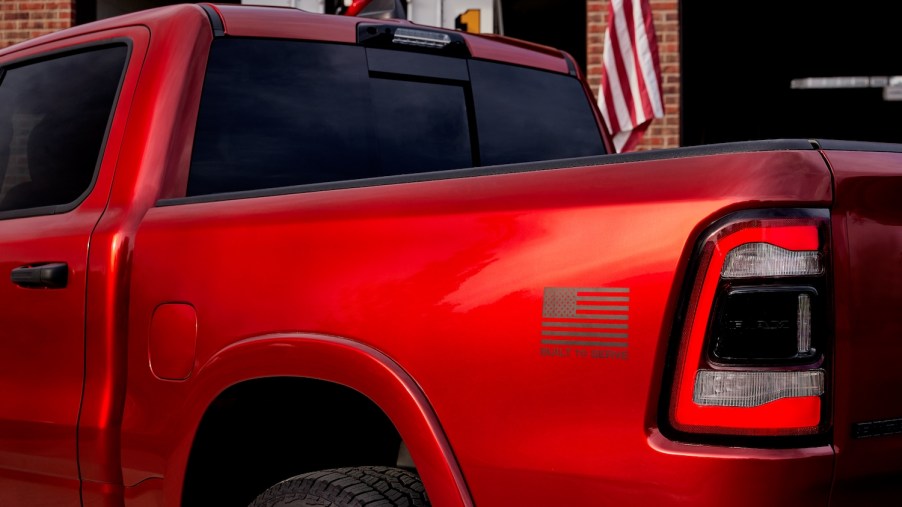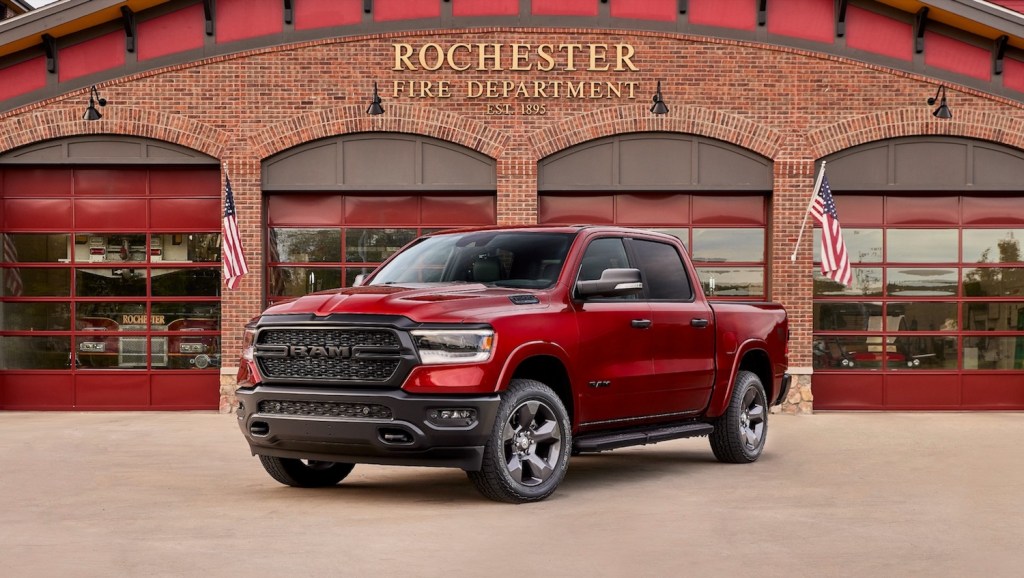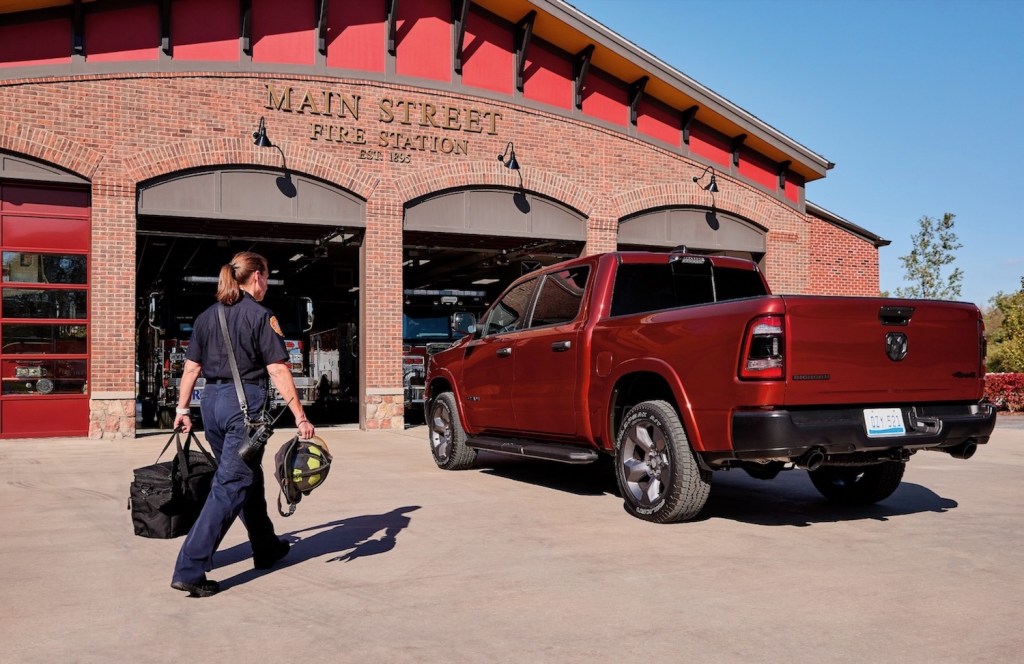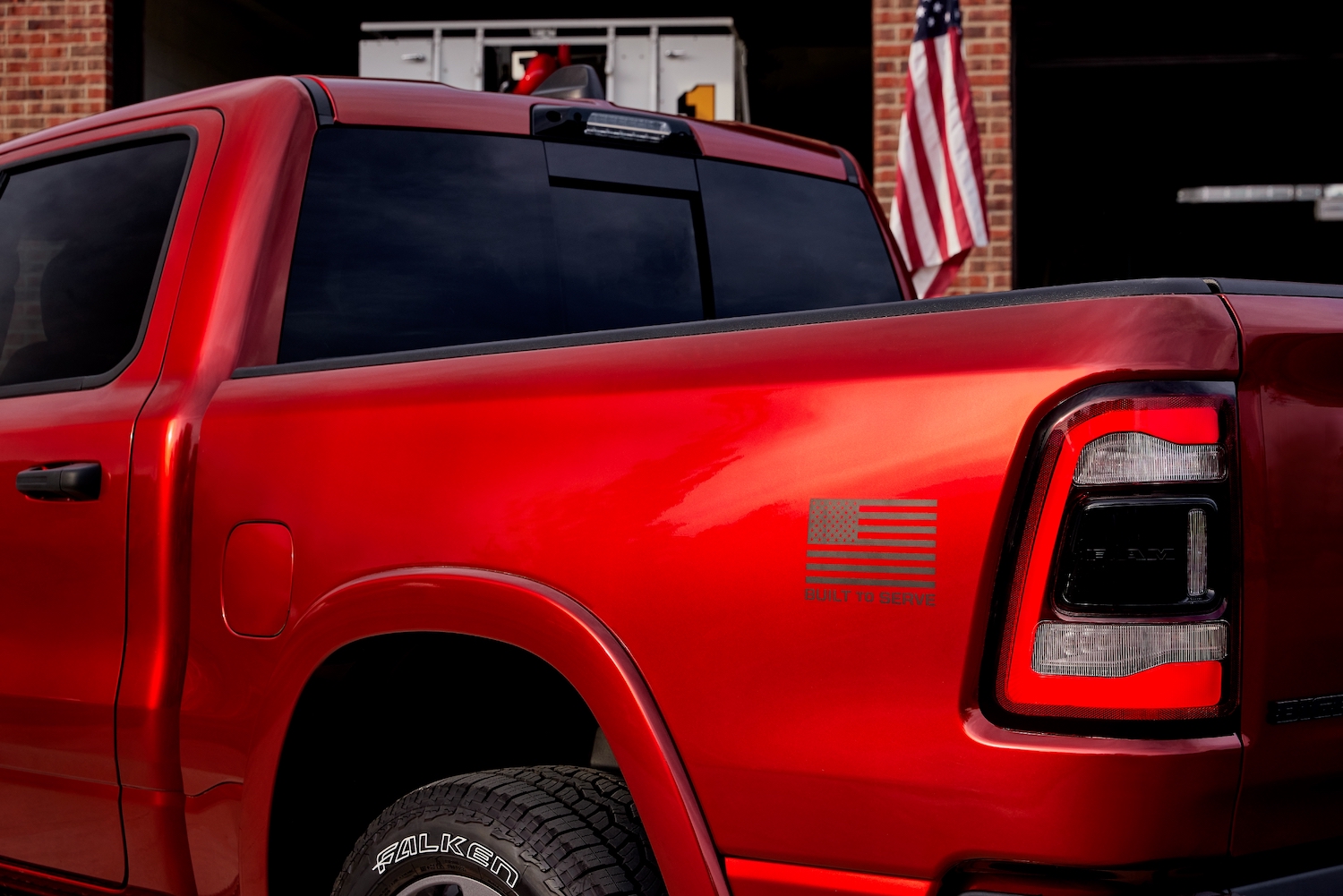
Only 1 Full-Size American Pickup Truck Has Never Offered a Hybrid Engine
General Motors offered one of the first hybrid pickup powertrains in both its Sierra and Silverado trucks. Ford then launched the F-150’s PowerBoost hybrid in 2021, and now Toyota is rolling out a similar i-FORCE MAX for the 2022 Tundra. Ram, on the other hand, has never offered a fully hybrid engine option in its trucks. But its marketing department would like you to believe otherwise.
Ford, Chevy, and Toyota have all built hybrid pickup trucks

General Motors launched an early hybrid pickup truck back in 2004. This generation of hybrid Silverado/Sierra was actually a “micro hybrid” because the electric motor in its transmission flywheel was only capable of charging the battery and starting the engine.
For the 2009 model year, General Motors introduced a full on hybrid pickup truck. The automaker offered this generation of the Silverado/Sierra with two 60-kilowatt electric motors housed in a CVT transmission behind a 6.0-liter V8.
The resulting truck could accelerate to 30 mph on electric power alone. But according to Edmunds, it accelerated slowly and delivered its power inconsistently. General Motors discontinued it after the 2013 model year.
Ford’s PowerBoost and Toyota’s i-FORCE MAX powertrains are remarkably similar. Both systems sandwich a powerful electric motor between a 3.5-liter twin-turbocharged V6 and a ten-speed automatic. These electric motors offer regenerative braking and can launch the truck from a standstill. Reviewers find the power delivery of both vehicles to be very smooth.
Ram’s eTorque engine is only a mild-hybrid system

Ram trucks advertises a mild-hybrid system for its V6 and V8 powerplants named eTorque. But mild-hybrid is a slightly misleading industry term.
In truth, a Ram 1500 truck with eTorque has a standard motor/transmission configuration. This is either the 3.6-liter Pentastar V6 or the 5.7-liter HEMI V8 paired with an eight-speed automatic. The eTorque “hybrid” system all lives at the front of the engine.
A “mild-hybrid” simply means a combined starter/generator unit capable of some regenerative braking. In the Ram’s case, this unit is connected to the engine through a heavy-duty serpentine belt.
Is Ram’s eTorque system any good?

Ram’s eTorque electric motor offers some regenerative braking. Once fully charged up, it can get the pickup truck rolling from a standstill.
In practice, Ram’s eTorque just eliminates any lag created by the engine start/stop system. It adds about 3 mpg to the truck’s around-town fuel-efficiency rating and 2-3 mpg to the truck’s overall fuel-efficiency rating.
Ram includes eTorque on every truck with its base 3.6-liter V6. This system is optional for the 5.7-liter HEMI V8, and included in the price of the V8 upgrade. It is not an option with Ram’s 3.0-liter EcoDiesel V6.
Combining an engine’s starter and generator into a single unit to smooth out auto start/stop is the next step in internal combustion evolution. This is why General Motors offers a similar eAsssist option on its pickups, and why I suspect the next generation Dodge Charger will have eTorque.
Best of all, Ram offers eTorque on its 1500 full-size pickup trucks, for free. Its a great move to set the automaker apart. Just don’t get this “mild-hybrid” system confused with the powerful, fully-hybrid pickup trucks offered by Ford and Toyota.
See the eTorque system in action in the video below:



